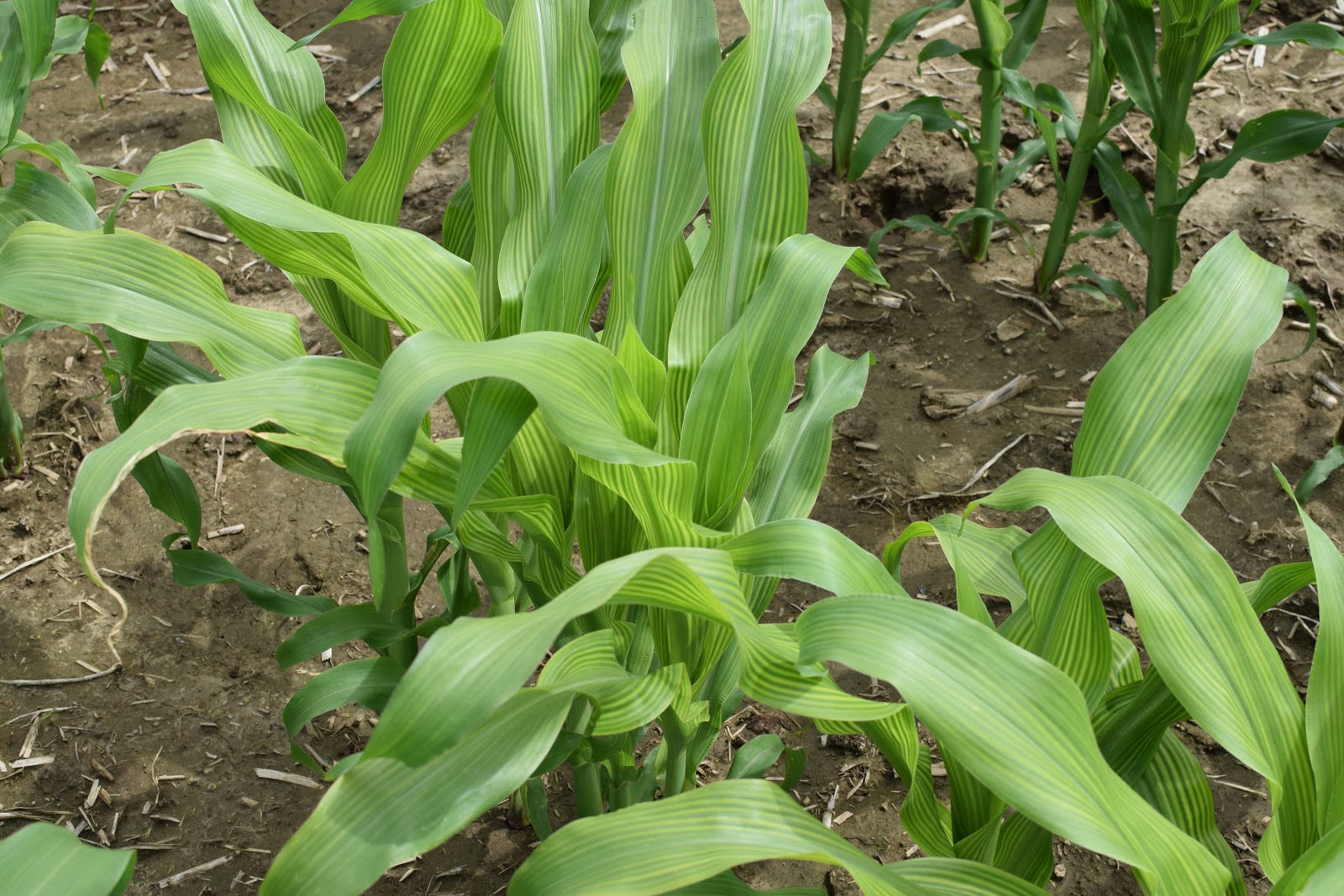Sulfur fertilizer application: Does S carry over from one year to the next?

By: Dan Kaiser, Extension nutrient management specialist
Nov 29, 2023
Can elemental sulfur (S) supply available S to crops for a longer period of time compared to sulfate sources? An ongoing study is looking at how different sources of sulfur fertilizer behave over time. The sources we are looking at are potassium (K) sulfate, K-MST (Micronized Sulfur Technology), and Tiger 90. Data from 2023 shows some interesting results.
Background
Sulfur (S) is contained in many forms in the soil but mostly in organic forms that are not plant available. Only sulfate forms of sulfur can be taken up by plants. Similar to nitrate, the sulfate anion is negatively charged, and many consider sulfur to be highly leachable. While movement of sulfur can be rapid in some soils, studies have shown that sulfate can be taken up by a crop one or more years after application.
Elemental sulfur has to be oxidized, a process by which microorganisms in the soil convert elemental sulfur to sulfate. Since this process is controlled by microorganisms, the rate at which oxidation occurs depends on soil temperature, moisture, and the size and concentration of the elemental sulfur particles in the fertilizer applied. What is not well known is how long it takes elemental sulfur contained in fertilizer to oxidize to sulfate, and whether elemental S can supply available sulfur to crops for a longer period of time compared to sulfate.
Current research
An ongoing AFREC-funded study is looking at the length of time that fertilizers containing elemental S can supply plant-available S. Research is being conducted in two phases. In phase one, which ran from 2019 to 2022 at four locations, sulfur sources were applied annually in a continuous corn rotation at four different application rates in the spring before planting. The three sulfur sources were potassium sulfate, K-MST, and Tiger 90. They were applied at 5, 10, and 20 lbs of S per acre. All sources were incorporated into the soil soon after application. Sulfur increased corn yield at three of the four locations while the sources varied only at two locations, where sulfate and MST sulfur increased corn grain yield more than Tiger 90.
Phase two of the study started in the spring of 2023. Research was continued only at two locations (Rosemount and Waseca, Minnesota), where source of sulfur impacted yield. For phase two, each plot where sulfur was previously applied was split into two separate plots. Sulfur application will be continued on one of the two plots and discontinued on the other plot to determine how long corn yield can be sustained with previous applications of fertilizer, or “residual” fertilizer.
2023 results
So, what did we find in 2023? Results were similar at the two locations. There was a difference in how previous applications of the sulfur fertilizer sources affected corn yield in 2023. Annual applications of sulfate and MST both produced the greatest corn grain yield in 2023. Annual application of Tiger 90 produced only 93% of the yield produced by sulfate and MST, which is similar to previous years.
What is interesting is the yield produced in plots where fertilizer application was discontinued for 2023.

Similar yield was produced by annual application versus residual MST and Tiger 90, both elemental sulfur fertilizer sources. The only residual fertilizer source that maximized yield was MST, indicating that there was still some residual fertilizer from a previous year’s application that was still oxidizing sufficient amounts of available sulfur in 2023. What is interesting is that both annual application and residual Tiger 90 produced less, but similar yield, which may indicate that sulfur applied as Tiger 90, when incorporated into the soil, may not be available the year it is applied and may be oxidizing one or more years after application. In addition, the oxidation and availability of the sulfur in Tiger 90 is much less than MST or sulfate fertilizer sources, supplying less available sulfur when comparing similar application rates. It should be noted that the Tiger 90 was incorporated within a week after application, which may not have been enough time to disperse the elemental sulfur contained in the pastilles, resulting in less available sulfur.
Residual sulfate predictably produced less yield than annual application. However, the higher application rate (20 lbs S per acre as sulfate) yielded closer to the annual application rate of 5 lbs per acre, which barely increased yield over the no-sulfur control. The rate data are not shown here but I expect to see greater impacts of rate as this study progresses over time, where lower application rates will run out of S sooner. This data is the first of at least three planned years of study. While preliminary, the data does provide some insights into the longevity of sulfur fertilizer application.
Additional resources:
• Strategic Farming webinar recording on sulfur (February 2022)
• U of M corn fertilizer guidelines
• U of M sulfur guide
• Video: What source of sulfur is right for you? (August 2019)
This article was originally published in the Minnesota Crop News. Republished here with permission.
